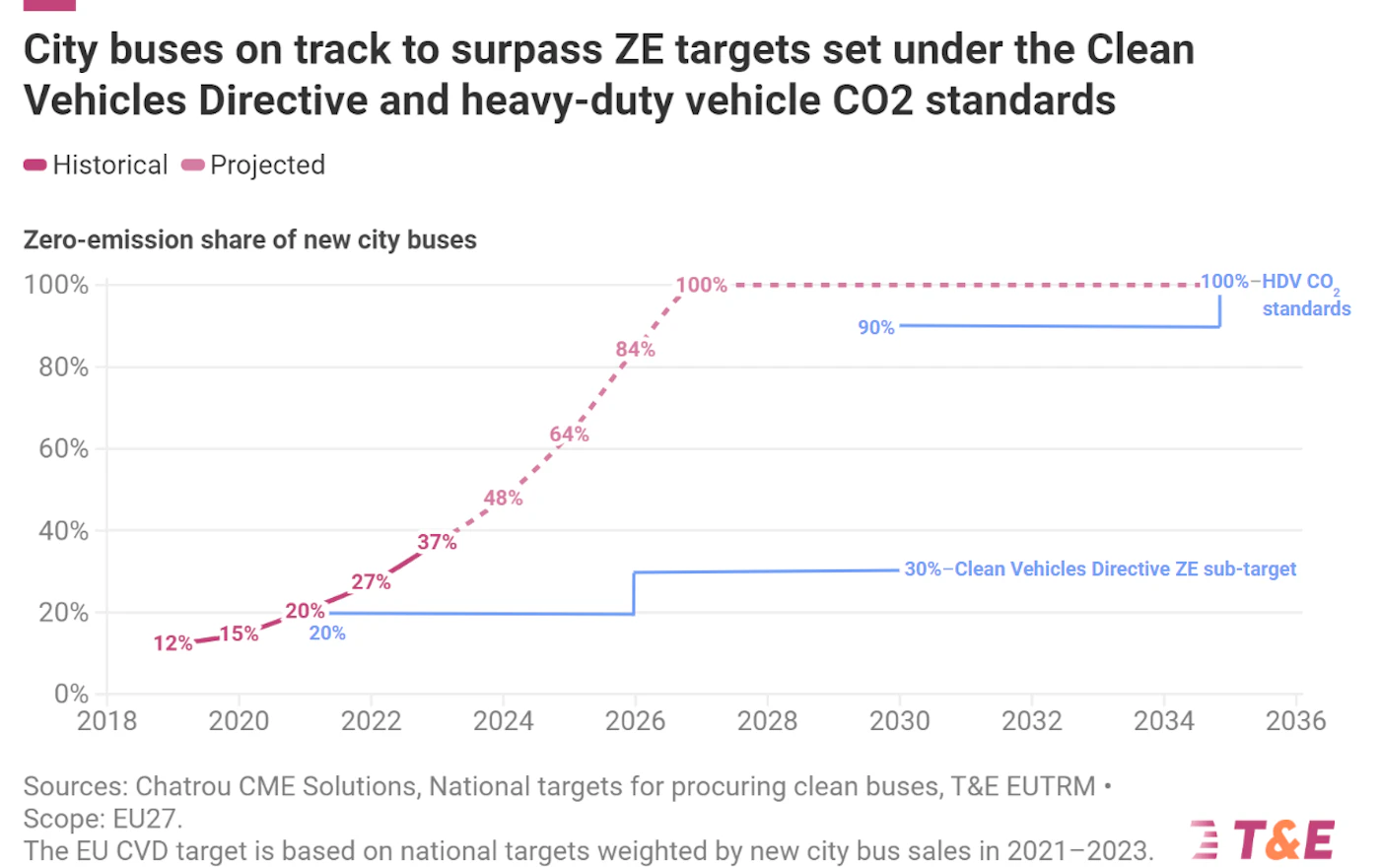27 European cities are targeting ZE fleets by 2025 or 2030, T&E found
Norway, Slovenia, Denmark, the Netherlands, have achieved 100% of their new city bus sales being zero-emission in 2023. According to a recent study by Transport & Environment, battery-electric buses reached 36% of new city bus sales in 2023 in the EU. But what is even more interesting, based on the projections of the organization, “At […]

Norway, Slovenia, Denmark, the Netherlands, have achieved 100% of their new city bus sales being zero-emission in 2023. According to a recent study by Transport & Environment, battery-electric buses reached 36% of new city bus sales in 2023 in the EU. But what is even more interesting, based on the projections of the organization, “At this growth rate, 100% of new EU city buses could already be zero-emission (ZE) by 2027“.
Eight European cities aim to achieve 100% ZE bus fleets in 2025, with further 19 aiming for the same goal in 2030.
Transport & Environment: EU targets fall behind market reality
Such forecast highlights, in T&E words, that “EU regulation is falling behind market realities”, as the recently adopted CO2 standards for heavy-duty vehicles (HDVs) require 90% of new city buses to be ZE by 2030, and 100% by 2035. The even less ambitious Clean Vehicles Directive (CVD) sets average ZE procurement targets of only 20% in 2021–2025 and 30% in 2026–2030. The same organization has already urged Europe, also on our platform, to ban diesel buses as early as 2027.

At the country level, 15 Member States outperform the EU average in 2023, including five where ZE city buses already account for more than 90% of new sales: Slovenia, Denmark, the Netherlands, Ireland, and Finland.
ICCT found in late 2023 that six European Member States exclusively registered zero-emission city buses (Netherlands, Denmark, Slovenia, Ireland, Finland, and Portugal).
T&E reports highlight that “among major markets, ie. markets with at least 1,000 new city buses in 2023, the UK ranks highest with a ZE bus share of new sales of 63% in 2023. Spain ranks just above the EU average, with a 40% ZE share. Italy and Germany come in 3rd and 4th places respectively, with ZE shares of 29% and 26%. France ranks last of the major markets, with a 23% ZE share. Notably 46% of new city buses in France in 2023 are gas buses, a share that is second only to Estonia”.
Cities setting goals for zero emission buses in 2025, 2030, 2035
Many cities across Europe are setting ambitious targets for zero-emission (ZE) bus fleets. By 2025, at least eight cities aim to achieve 100% ZE bus fleets. This number is set to increase, with an additional 19 cities planning to reach this goal by 2030, and another 13 cities by 2035. 14 other cities have also committed to achieving significant reductions in emissions, albeit not reaching the 100% mark by 2035 or earlier.

Countries themselves are also joining this movement. Both the Netherlands and Denmark have set national targets for all urban buses to be zero-emission by 2030, showcasing a strong commitment at the national level to clean urban transport.
The value of the energy mix
While BEBs dominate the market, some countries still rely on a mix of propulsion technologies, highlighting transitional phases towards full electrification. Sweden and the United Kingdom, for instance, have significant shares of hybrid buses, at 24% and 37%, respectively, alongside their battery-electric fleets. This indicates a phased approach to reducing emissions while leveraging existing technologies. France and Germany exhibit a balanced approach, integrating BEBs with hybrids and maintaining a notable share of diesel buses.







